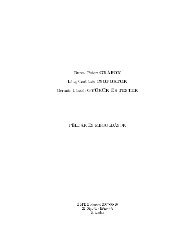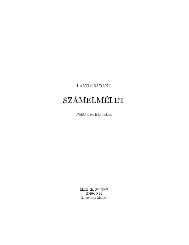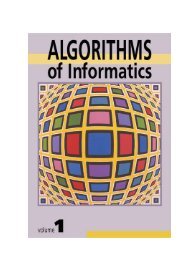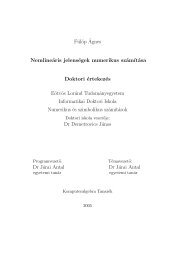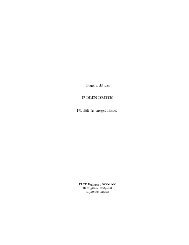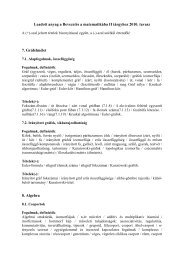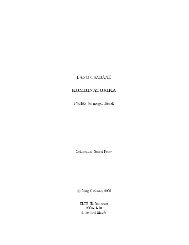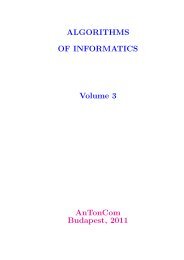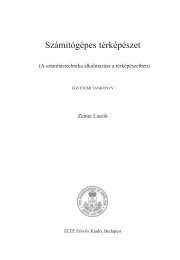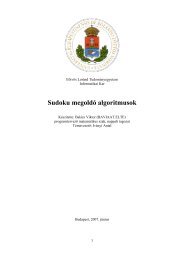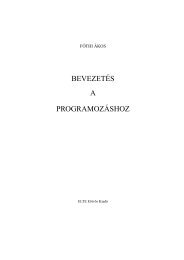On Erd˝os-Gallai and Havel-Hakimi algorithms
On Erd˝os-Gallai and Havel-Hakimi algorithms
On Erd˝os-Gallai and Havel-Hakimi algorithms
Create successful ePaper yourself
Turn your PDF publications into a flip-book with our unique Google optimized e-Paper software.
20 A. Iványi, L. Lucz, T. F. Móri, P. Sótér<br />
6 Running time of the precise testing <strong>algorithms</strong><br />
We tested the precise <strong>algorithms</strong> determining their the total running time for<br />
all the even sequences. The set of the even sequences is the smallest such set<br />
of sequences, whose the cardinality we know exact <strong>and</strong> explicite formula. The<br />
number of n-bounded sequences K(n) is also known, but this function grows<br />
too quickly when n grows.<br />
If we would know the average running time of the bounded sequences we<br />
would take into account that is is sufficient to weight the running times of the<br />
regular sequences with the corresponding frequencies. For example a homogeneous<br />
sequence consisting of identical elements would get a unit weight since<br />
it corresponds to only one bounded sequence, while a rainbow sequence consisting<br />
is n different elements as e.g. the sequence n, n − 1, . . . , 1 corresponds<br />
to n! different bounded sequences <strong>and</strong> therefore would get a corresponding<br />
weight equal to n!.<br />
We follow two ways of the decreasing of the running time of the precise<br />
<strong>algorithms</strong>. The first way is the decreasing of the number of the executable<br />
operations. The second way is, that we try to use quick (linear time) preprocessing<br />
<strong>algorithms</strong> for the filtering of the sequences in order to decrease of the<br />
part of sequences requiring the relative slow precise <strong>algorithms</strong>.<br />
For the first type of decrease of the expected running time is the shortening<br />
of the sequences <strong>and</strong> the application of the checking points, while for<br />
the the second type are examples the completion of HH algorithm with the<br />
parity checking or the completion of the EG algorithm with the binomial <strong>and</strong><br />
headsplitted <strong>algorithms</strong>.<br />
In this section we investigate the following precise <strong>algorithms</strong>:<br />
1) <strong>Havel</strong>-<strong>Hakimi</strong>-Shorting (HHSo).<br />
2) <strong>Havel</strong>-<strong>Hakimi</strong>-Shifting (HHSh).<br />
3) Erdős-<strong>Gallai</strong> algorithm (EG).<br />
4) Erdős-<strong>Gallai</strong>-Jumping algorithm (EGJ).<br />
5) Erdős-<strong>Gallai</strong>-Linear algorithm (EGL).<br />
Figure 5 contains the total number of operations of the <strong>algorithms</strong> HHSo,<br />
HHSh, EG, <strong>and</strong> EGL required for the testing of all even sequences of length<br />
n = 1, . . . , 15. The operations necessary to generate the sequences are included.<br />
Comparison of the first two columns shows that algorithm HHSh is much<br />
quicker than HHSo, especially if n increases. Comparison of the third <strong>and</strong><br />
fourth columns shows that we get substantial decrease of the running time<br />
if we have to test the input sequence only in the check points. Finally the



